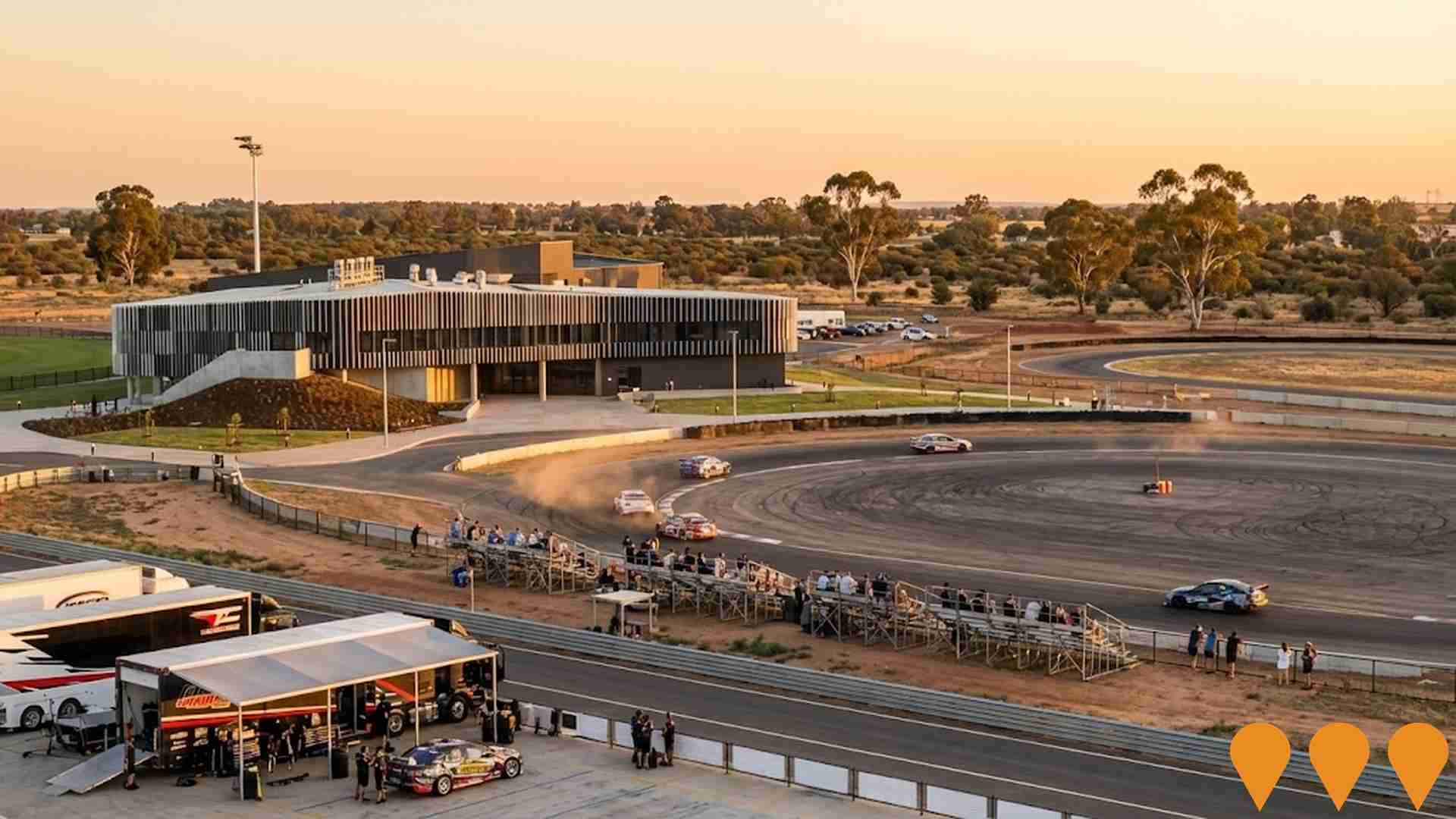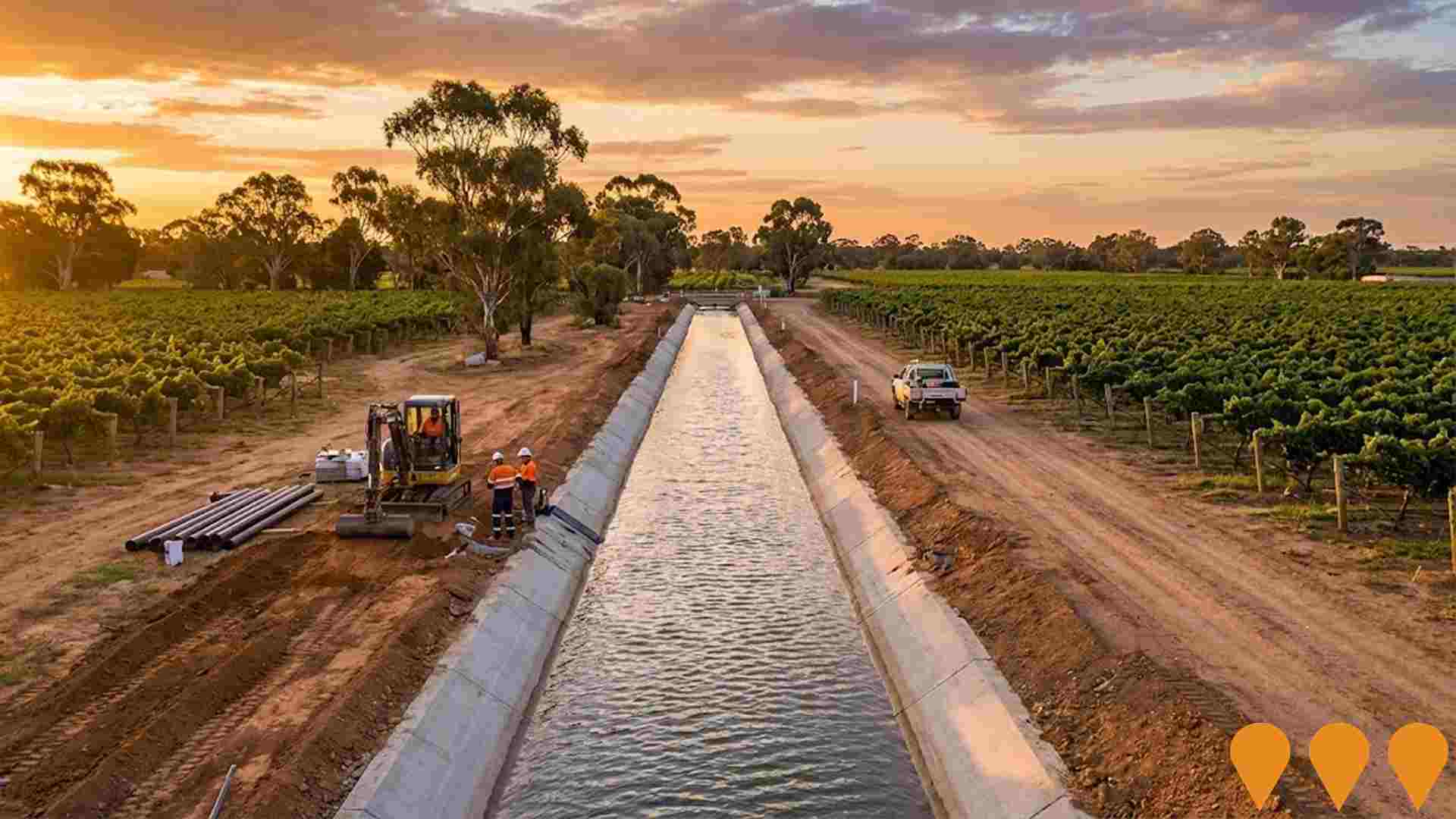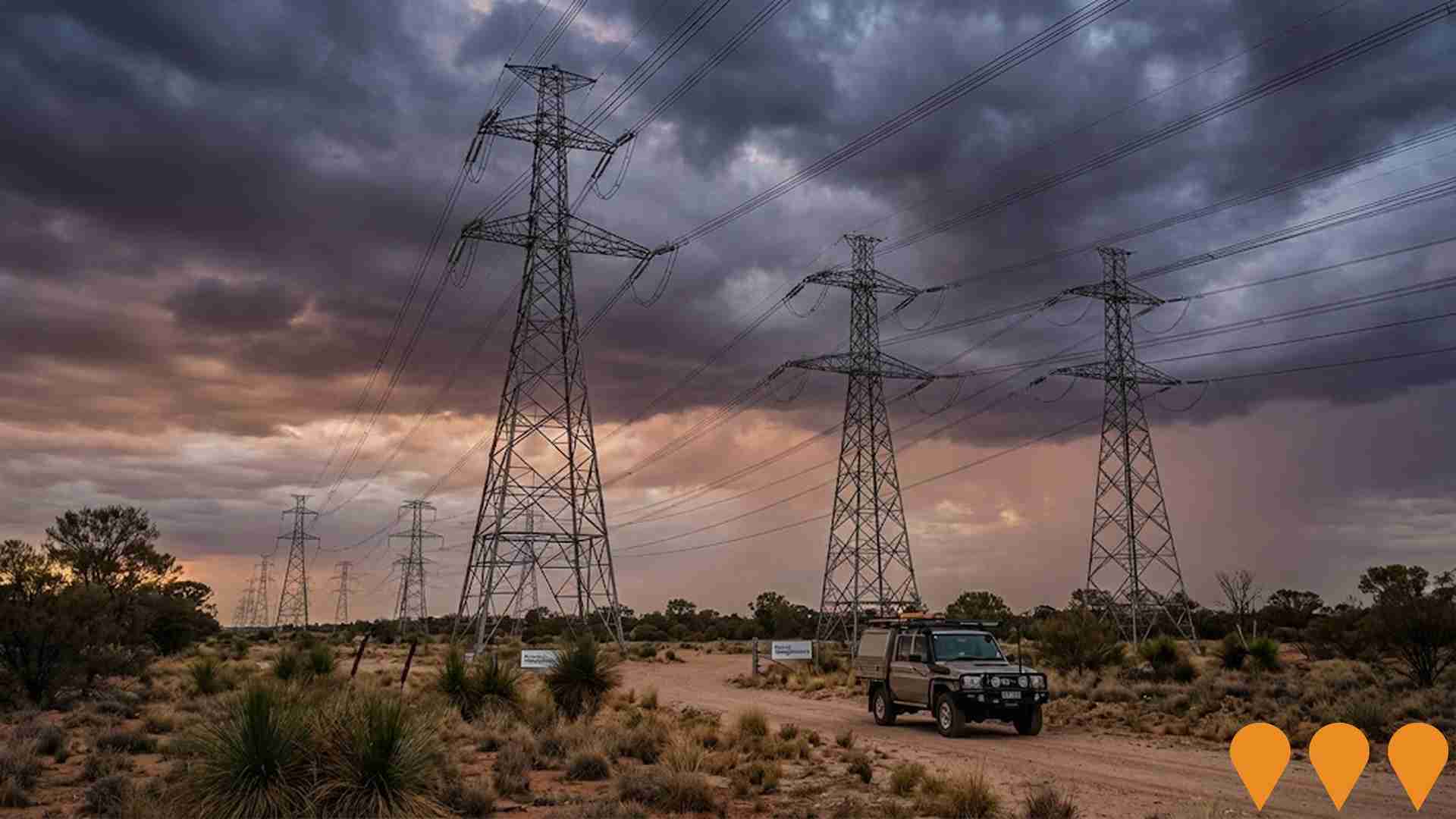Chart Color Schemes
est. as @ -- *
ABS ERP | -- people | --
2021 Census | -- people
Sales Activity
Curious about local property values? Filter the chart to assess the volume and appreciation (including resales) trends and regional comparisons, or scroll to the map below view this information at an individual property level.
Find a Recent Sale
Sales Detail
Population
Population growth drivers in Red Cliffs are strong compared to national averages based on AreaSearch's ranking of recent, and medium to long-term trends
Red Cliffs' population, as per AreaSearch's analysis, stood at 6,101 as of Aug '25. This marked a decrease of 37 individuals (0.6%) since the 2021 Census, which recorded a population of 6,138. The change was inferred from ABS' estimated resident population of 6,091 in Jun '24 and an additional 49 validated new addresses post-Census date. This resulted in a density ratio of 24 persons per square kilometer. Over the past decade (2015-2025), Red Cliffs exhibited resilient growth patterns with a 0.5% compound annual growth rate, outperforming its SA4 region. Overseas migration drove population growth, contributing approximately 74.3%.
AreaSearch adopted ABS/Geoscience Australia projections for each SA2 area, released in '24 with '22 as the base year. For areas not covered, VIC State Government's Regional/LGA projections from '23 were used with adjustments via weighted aggregation of population growth from LGA to SA2 levels. Growth rates by age group were applied across all areas for years 2032 to 2041. Future projections anticipate above median non-metropolitan area growth nationally, with Red Cliffs expected to increase by 1,158 persons to 2041, marking an 18.8% total increase over the 17-year period.
Frequently Asked Questions - Population
Development
Residential development activity is lower than average in Red Cliffs according to AreaSearch's national comparison of local real estate markets
Red Cliffs averaged approximately 30 new dwelling approvals annually. Between financial years 2021 (FY-21) and 2025 (FY-25), a total of 154 homes were approved, with an additional 5 approved so far in FY-26. The population has been declining recently, suggesting that new supply is likely meeting demand, providing good options for buyers.
The average construction cost value of new properties was $332,000, which is below the regional average, indicating more affordable housing options. In FY-26, $4.4 million in commercial approvals have been registered, reflecting the area's primarily residential nature. Compared to the Rest of Vic., Red Cliffs maintains similar construction rates per person, contributing to market stability aligned with regional patterns.
New building activity shows 95.0% standalone homes and 5.0% medium and high-density housing, preserving the area's low density nature and attracting space-seeking buyers. The location has approximately 268 people per dwelling approval, indicating a low density market. Population forecasts suggest Red Cliffs will gain 1,147 residents by 2041. Development is keeping pace with projected growth, though increasing competition among buyers may arise as the population expands.
Frequently Asked Questions - Development
Infrastructure
Red Cliffs has emerging levels of nearby infrastructure activity, ranking in the 24thth percentile nationally
Changes in local infrastructure significantly affect an area's performance. AreaSearch has identified ten projects expected to impact this region. Notable ones are Red Cliffs Solar Farm, Red Cliffs Early Years Hub, Sunraysia Water Efficiency Project, and Mildura Solar Farm. The following list details those likely to have the most relevance.
Professional plan users can use the search below to filter and access additional projects.
INFRASTRUCTURE SEARCH
 Denotes AI-based impression for illustrative purposes only, not to be taken as definitive under any circumstances. Please follow links and conduct other investigations from the project's source for actual imagery. Developers and project owners wishing us to use original imagery please Contact Us and we will do so.
Denotes AI-based impression for illustrative purposes only, not to be taken as definitive under any circumstances. Please follow links and conduct other investigations from the project's source for actual imagery. Developers and project owners wishing us to use original imagery please Contact Us and we will do so.
Frequently Asked Questions - Infrastructure
Victorian Murray Floodplain Restoration Project
A $429 million joint Victorian-Commonwealth initiative to construct regulators, channels, containment banks and ancillary works at nine high-priority floodplain sites along the Victorian Murray River. The project will enable active environmental watering of over 14,000 hectares of floodplain, restoring natural inundation patterns, improving ecological health and building drought resilience while maintaining existing flood protection for surrounding landholders.

Mildura Base Public Hospital Intensive Care Unit Expansion
A $2.48 million expansion of the intensive care unit at Mildura Base Public Hospital, increasing the number of intensive care beds from five to eight, adding two short-stay beds, reconfiguring and upgrading existing rooms, and enhancing capacity for high-quality coronary care to improve patient flow, reduce waiting times, and provide better critical care services for Mildura and surrounding communities.
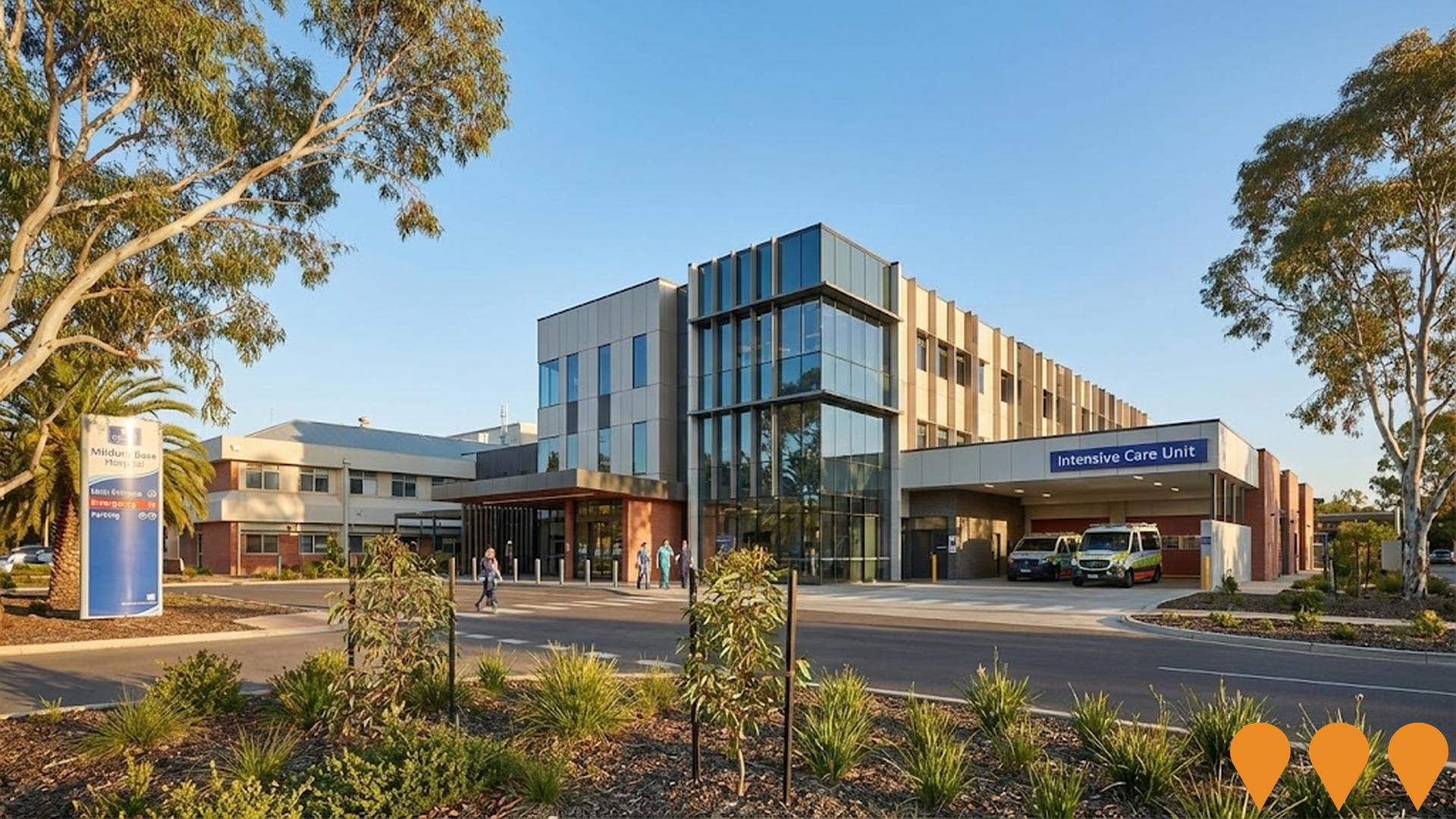
South West Renewable Energy Zone
The South West Renewable Energy Zone (REZ) in NSW is one of five declared REZs under the Electricity Infrastructure Roadmap. Declared in April 2024, access rights were granted to successful projects in April 2025. The REZ is now in delivery phase, with construction underway on EnergyConnect (interstate transmission link, expected completion 2027) and early works progressing on VNI West. Four initial generation and storage projects (totalling ~3.56 GW generation and >700 MW storage) have secured access rights and are advancing toward financial close and construction in 2026-2028. The REZ will ultimately support up to 5.5 GW of new renewable capacity.
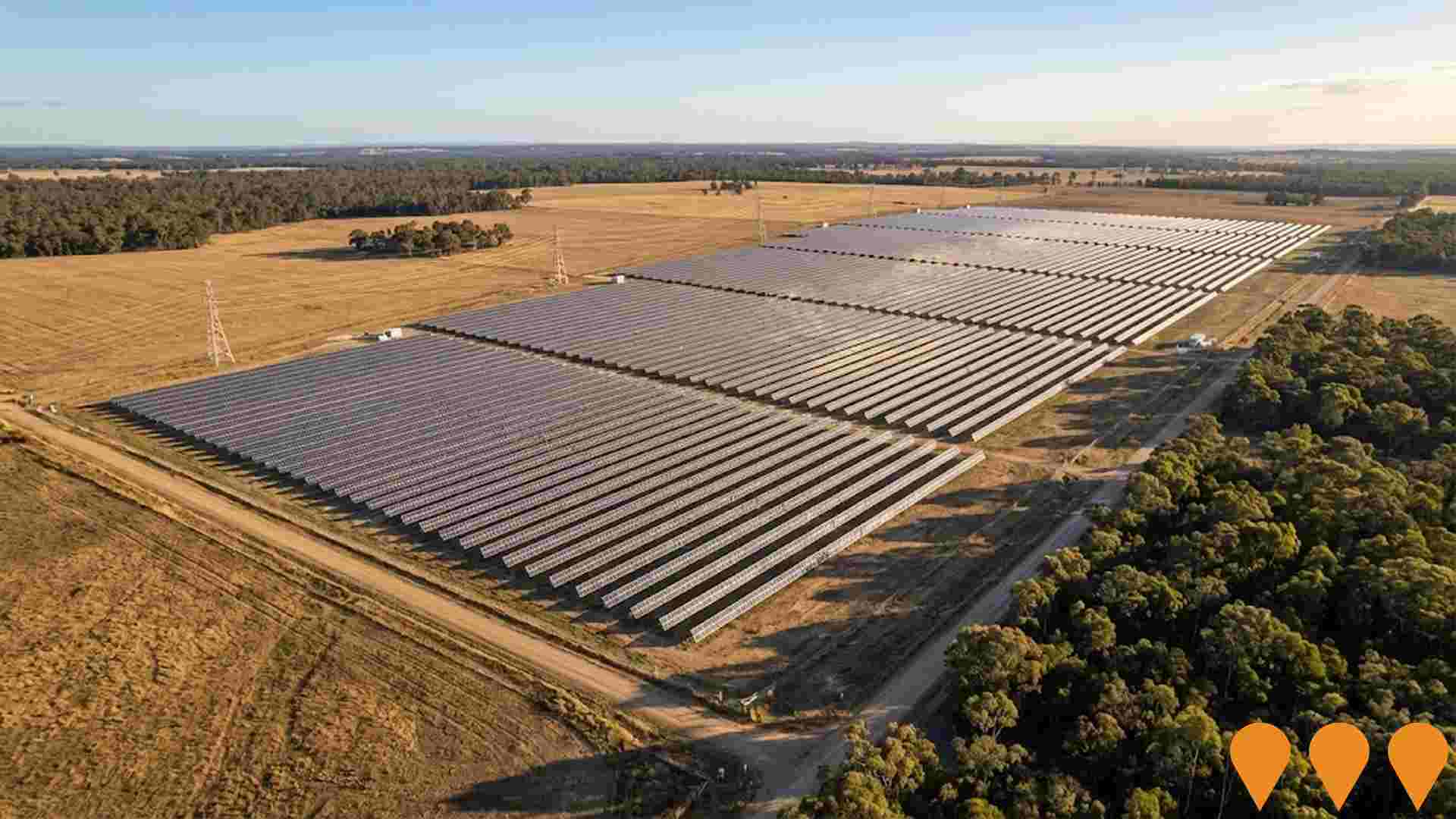
Mildura Passenger Rail Return
Proposal to reintroduce passenger rail services between Melbourne and Mildura via Maryborough and Ballarat. The service would operate daily return trips with a journey time of under seven hours, aimed at improving regional connectivity, reducing transport disadvantage, boosting tourism and supporting economic development in north-west Victoria.

Murray River to Broken Hill Water Pipeline
270 km bulk water pipeline from the Murray River (Wentworth) to the Mica Street WTP at Broken Hill. Delivers up to ~37 ML/day with multiple pump stations and bulk storage, securing long term water supply for Broken Hill and nearby communities. Built for WaterNSW; operations and maintenance delivered under a JV including John Holland and TRILITY.

Nowingi Solar Power Station
A 300 MW solar photovoltaic power station with integrated 300 MW/2.4 GWh (8-hour duration) battery energy storage system. The project received federal approval in September 2025 and was awarded a Capacity Investment Scheme agreement by the Australian Government in October 2025. When operational, it will be Australia's largest 8-hour duration battery facility, capable of powering 100,000 homes. Construction is expected to commence in 2026, creating approximately 250 jobs over an 18-month build period, with 5 permanent operational positions. The 639-hectare site will support agrivoltaic practices, allowing continued sheep grazing alongside solar generation.
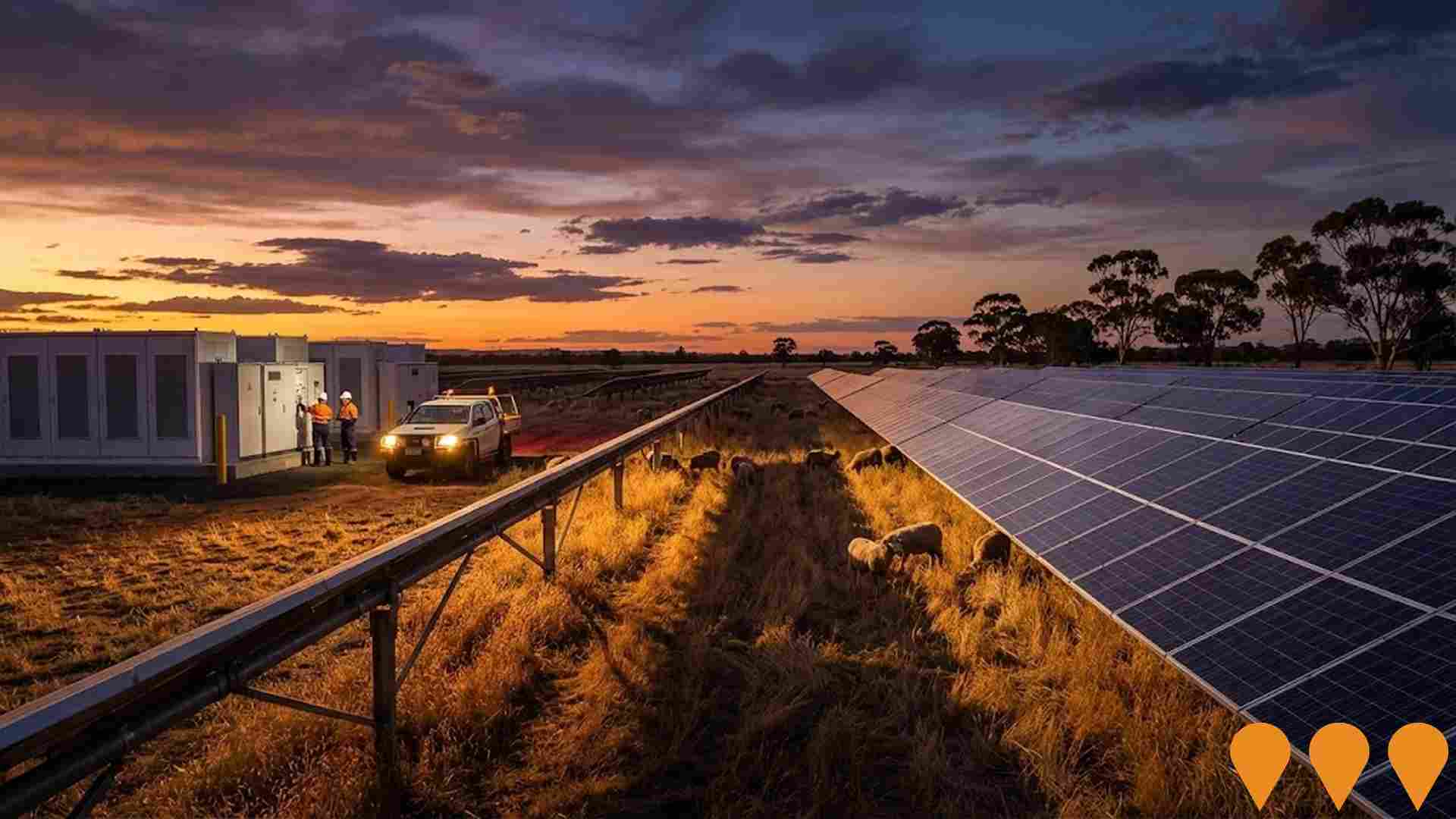
Sunraysia Water Efficiency Project
The $37.9 million Sunraysia Water Efficiency Project improved irrigation efficiency across the Merbein, Mildura, and Red Cliffs Irrigation Districts through modernization of infrastructure including 27km of channel upgrades (lining and pipeline installation), replacement of 357 Dethridge meters, and upgrade of 325 domestic and stock meters. Completed in 2024, the project recovers 1.8 GL of water annually for environmental purposes in the Murray-Darling Basin, created over 100 local jobs during construction, and delivered a $20 million regional GDP increase. The project was delivered by Lower Murray Water and funded by the Australian Government.

Mildura Solar Farm
The Mildura Solar Farm is a 110 MW DC solar project located near Mildura, Victoria. It is designed to generate approximately 160,000 MWh of clean, renewable electricity annually, sufficient to power around 34,000 homes. The project supports Victoria's renewable energy targets and provides economic benefits to the local community through job creation and investment. Developed by Sante Group.
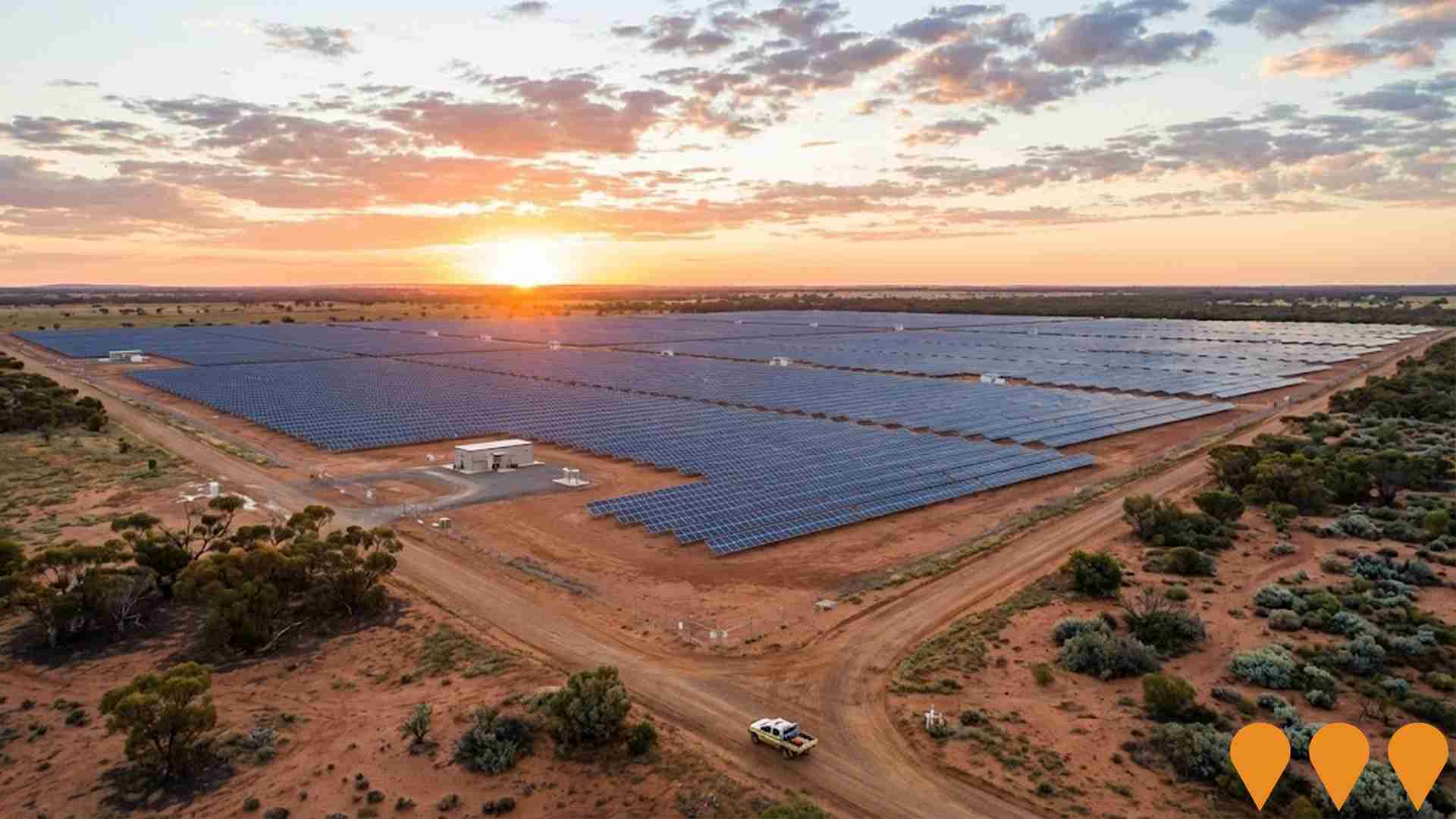
Employment
Despite maintaining a low unemployment rate of 3.0%, Red Cliffs has experienced recent job losses, resulting in a below average employment performance ranking when compared nationally
Red Cliffs has a balanced workforce with diverse sector representation and an unemployment rate of 3.0% as of June 2025. There are 3,028 residents employed, which is 0.7% below the Rest of Vic.'s rate of 3.8%.
Workforce participation in Red Cliffs is on par with Rest of Vic.'s 57.4%. Leading employment industries among residents comprise agriculture, forestry & fishing, retail trade, and health care & social assistance. Notably, agriculture, forestry & fishing has an employment level at 2.1 times the regional average. However, health care & social assistance is under-represented with only 10.9% of Red Cliffs's workforce compared to 16.8% in Rest of Vic..
The area offers limited local employment opportunities, as indicated by Census data showing fewer working residents than the resident population total. Over the 12 months to June 2025, labour force levels decreased by 4.2%, with a 3.4% decline in employment causing the unemployment rate to fall by 0.8 percentage points. This contrasts with Rest of Vic., where employment contracted by 0.9%, the labour force fell by 0.4%, and unemployment rose by 0.4 percentage points. Jobs and Skills Australia's national employment forecasts from May 2025 project a 6.6% increase over five years and 13.7% over ten years nationally, with local growth in Red Cliffs estimated at approximately 5.1%% over five years and 11.3% over ten years based on industry-specific projections.
Frequently Asked Questions - Employment
Income
Income figures position the area below 75% of locations analysed nationally by AreaSearch
Red Cliffs had a median taxpayer income of $44,799 and an average of $49,697 in financial year 2022, according to postcode level ATO data aggregated by AreaSearch. This is lower than the national average, with Rest of Vic.'s median income at $48,741 and average income at $60,693. By September 2025, estimates suggest a median income of approximately $50,247 and an average of $55,740, based on Wage Price Index growth of 12.16% since financial year 2022. The 2021 Census figures place household, family, and personal incomes in Red Cliffs between the 24th and 25th percentiles nationally. Income analysis reveals that 33.3% of residents (2,031 people) fall within the $1,500 - 2,999 income bracket, reflecting patterns seen in the surrounding region where 30.3% occupy this range. Housing costs are modest, with 88.5% of income retained, placing total disposable income at the 30th percentile nationally.
Frequently Asked Questions - Income
Housing
Red Cliffs is characterized by a predominantly suburban housing profile, with above-average rates of outright home ownership
Red Cliffs' dwelling structure, as per the latest Census, comprised 93.1% houses and 6.9% other dwellings (semi-detached, apartments, 'other' dwellings). In comparison, Non-Metro Vic.'s dwelling structure was 85.6% houses and 14.3% other dwellings. Home ownership in Red Cliffs was at 37.2%, with mortgaged dwellings at 39.2% and rented dwellings at 23.6%. The median monthly mortgage repayment in the area was $1,083, compared to Non-Metro Vic.'s average of $1,283. The median weekly rent figure for Red Cliffs was $240, while Non-Metro Vic.'s was $265. Nationally, Red Cliffs' mortgage repayments were significantly lower than the Australian average of $1,863, and rents were substantially below the national figure of $375.
Frequently Asked Questions - Housing
Household Composition
Red Cliffs has a typical household mix, with a higher-than-average median household size
Family households constitute 70.7% of all households, including 29.8% couples with children, 28.0% couples without children, and 11.7% single parent families. Non-family households account for the remaining 29.3%, with lone person households at 26.8% and group households comprising 2.5%. The median household size is 2.5 people, which is larger than the Rest of Vic average of 2.4.
Frequently Asked Questions - Households
Local Schools & Education
Red Cliffs faces educational challenges, with performance metrics placing it in the bottom quartile of areas assessed nationally
The area's university qualification rate is 12.1%, significantly lower than Victoria's average of 33.4%. Bachelor degrees are the most common at 8.6%, followed by graduate diplomas (2.0%) and postgraduate qualifications (1.5%). Vocational credentials are prevalent, with 41.2% of residents aged 15+ holding them, including advanced diplomas (9.8%) and certificates (31.4%). Educational participation is high at 29.9%, comprising primary education (11.8%), secondary education (8.6%), and tertiary education (1.7%).
Red Cliffs has five schools with a combined enrollment of 831 students, serving distinct age groups with four primary and one secondary school. School places per 100 residents are 13.6, below the regional average of 17.1, indicating some students may attend schools in neighboring areas.
Frequently Asked Questions - Education
Schools Detail
Nearby Services & Amenities
Transport
Transport servicing is low compared to other areas nationally based on assessment of service frequency, route connectivity and accessibility
The analysis of public transport in Red Cliffs shows that there are 19 active transport stops currently operating. These stops serve a mix of bus routes, with a total of 4 individual routes providing service. Together, these routes facilitate 227 weekly passenger trips.
The accessibility of transport in the area is considered limited, with residents typically residing 680 meters away from the nearest transport stop. On average, there are 32 trips per day across all routes, which translates to approximately 11 weekly trips per individual stop.
Frequently Asked Questions - Transport
Transport Stops Detail
Health
Health performance in Red Cliffs is well below average with prevalence of common health conditions notable across both younger and older age cohorts
Red Cliffs faces substantial health challenges with notable prevalence of common conditions across both younger and older age groups. Approximately 46% (~2,812 people) have private health cover, lower than the national average of 55.3%.
The most prevalent medical conditions are asthma (10.1%) and mental health issues (9.5%). About 63.4% report no medical ailments, compared to 65.1% in the rest of Victoria. Around 18.9% (~1,151 people) are aged 65 and over. Health outcomes among seniors present some challenges but perform better than the general population in health metrics.
Frequently Asked Questions - Health
Cultural Diversity
Red Cliffs is considerably less culturally diverse than average when assessed alongside AreaSearch's national rankings for language and cultural background related metrics
Red Cliffs was found to have a below average level of cultural diversity, with 87.0% of its population being Australian citizens, 89.8% born in Australia, and 91.6% speaking English only at home. The dominant religion in Red Cliffs is Christianity, which accounts for 44.2% of the population. However, there was an overrepresentation in the 'Other' category, comprising 0.8% compared to 1.0% across Victoria.
In terms of ancestry, the top three groups represented are Australian (32.7%), English (29.9%), and Scottish (7.8%). Notably, Hungarian is overrepresented at 0.4%, Italian at 5.3%, and German at 4.1%, compared to regional averages.
Frequently Asked Questions - Diversity
Age
Red Cliffs's median age exceeds the national pattern
The median age in Red Cliffs is 40 years, which is slightly lower than Rest of Vic.'s average of 43 but higher than Australia's median of 38. The 25-34 age cohort makes up 14.7% of the population in Red Cliffs, compared to the Rest of Vic. average, indicating over-representation. Conversely, the 75-84 year-olds make up only 5.3%, showing under-representation. Between the 2021 Census and present, the 25-34 age group has increased from 12.2% to 14.7%. However, the 5-14 cohort has decreased from 13.2% to 11.2%, and the 45-54 group has dropped from 13.0% to 11.2%. By 2041, population forecasts show significant demographic shifts in Red Cliffs. The 25-34 age cohort is projected to grow by 367 people (41%), reaching a total of 1,265. Meanwhile, the 55-64 and 15-24 cohorts are expected to see population declines.
